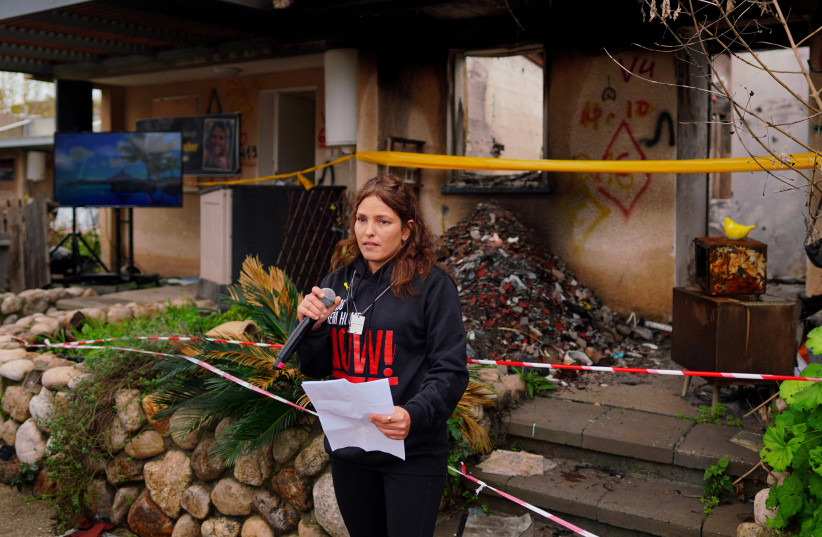Since the October 7 massacre, we've known for certain that sexual violence has been used as a weapon of war.
Until that point, it was unclear if sexual violence had been common practice in the Israeli-Palestinian conflict in general, in contrast to many other wars where it has been routine and even central in attacks on opponents.
Be it the Russia-Ukraine War, the Vietnam War, or World War II, and dating much further back, sexual violence has been used to weaken and victimize civilians who have nothing to do with the military.
On October 7, we saw Israelis join the list of victims of wartime sexual violence. We already knew about it, not from the testimonies given on the Israeli side, but because of the blatant pride that Hamas flaunted as the terrorist organization broadly shared its horrific exploits.
Slowly but surely, more and more stories came to light. Women and men alike were raped at gunpoint, gang-raped, with their genitalia brutalized beyond recognition and, in some cases, even set aflame. The footage of many of these attacks was paraded proudly online.

Still, somehow, many around the world did not believe the Israeli victims. The leading voices of the #MeToo movement – the very movement outspoken in calling for the broad and all-encompassing belief that, first and foremost, victims of sexual violence must be believed – were among those who turned a blind eye to the horrors experienced by these Israelis. They claimed there was no evidence, that Israel was the oppressor, and that the more powerful body in a two-sided conflict could not fall victim to such things. Well, clearly, it did.
Of course, they ignored the fact that the very group committing these terrible acts was sharing them openly. They looked away. They insisted that evidence needed to be presented from the Israeli side. Still, for that to happen, it is the survivors – traumatized, terrorized, and victimized – who must make the enormous personal sacrifice and come forward at the expense of their mental well-being just for some rape deniers to have the proof they demand.
A United Nations delegation toured Israel for two weeks, collected evidence, and presented a report saying there was definitive proof of sexual violence used against the Israeli victims. The UN, an organization that has not been particularly friendly towards Israel since the start of the war, admitted that Israeli women were raped and tortured.
Slowly but surely, however, women are coming forward – not just to present their testimonies to the support systems in place or to the relevant authorities, but publicly.
A hostage's testimony
On Tuesday, released hostage Amit Soussana gave her personal testimony of the sexual violence and physical abuse she endured in Hamas captivity in an eight-hour interview with The New York Times.
In the past, these testimonies were given anonymously or secondhand – i.e., by a witness rather than a survivor – but Soussana is the first released hostage to give direct testimony of sexual atrocities committed by Hamas.
In the interview, Soussana recalled being held hostage in a child’s bedroom in Gaza with a chain attached to her left ankle. The Hamas terrorist in charge of guarding her, whom she named Muhammad, occasionally would sit beside her on the bed in a Spongebob-covered room, lift her shirt, and grope her, she said.
Muhammad would constantly ask about her period, and around October 24, he forced her to commit a sex act on him. He unlocked the chain around her ankle so that she could wash herself in the bathtub, and he returned shortly thereafter with a pistol, shoving it to her forehead. He hit her repeatedly to force her to take her towel off, dragged her back into the room, and sexually assaulted her.
“I’m bad. I’m bad. Please don’t tell Israel,” he said afterward.
So there you have it – the evidence you wanted so badly. You have the firsthand testimony of a woman brutally violated by a Hamas terrorist.
Now, do you believe us?
